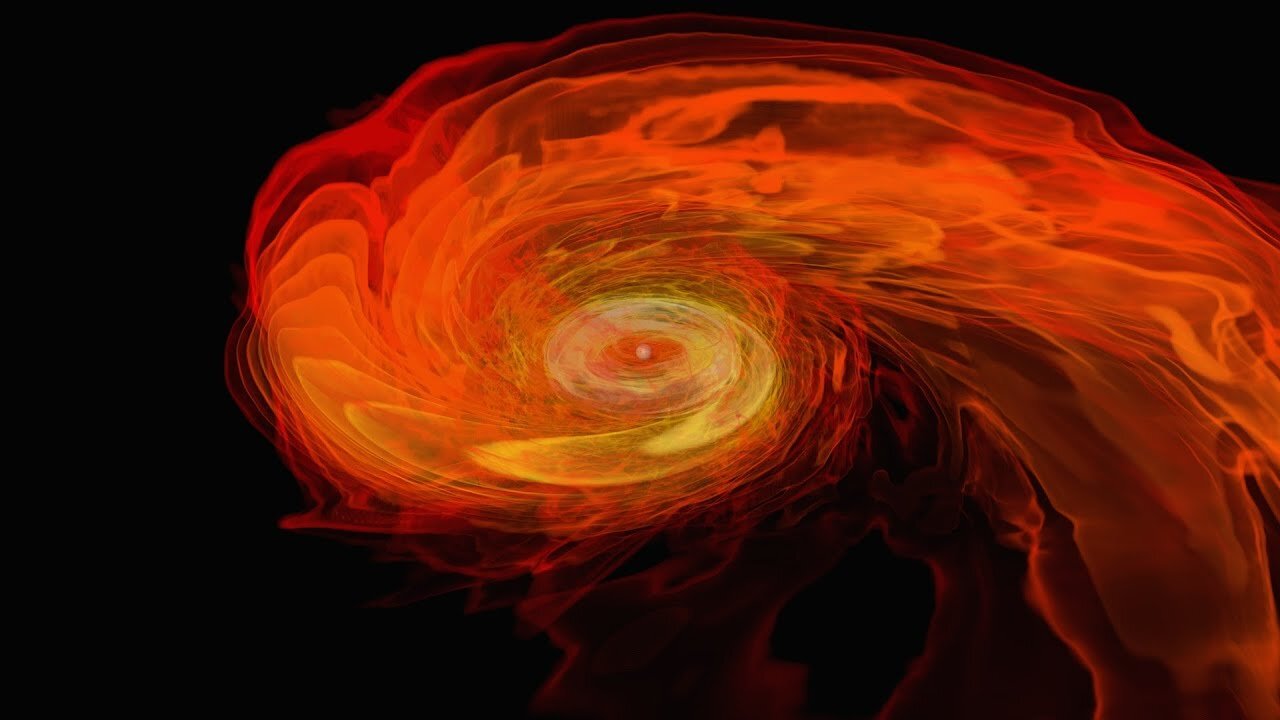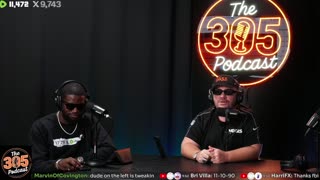Premium Only Content

NASA | Neutron Stars Rip Each Other Apart to Form Black Hole
This supercomputer simulation shows one of the most violent events in the universe: a pair of neutron stars colliding, merging and forming a black hole. A neutron star is the compressed core left behind when a star born with between eight and 30 times the sun's mass explodes as a supernova. Neutron stars pack about 1.5 times the mass of the sun — equivalent to about half a million Earths — into a ball just 12 miles (20 km) across.
As the simulation begins, we view an unequally matched pair of neutron stars weighing 1.4 and 1.7 solar masses. They are separated by only about 11 miles, slightly less distance than their own diameters. Redder colors show regions of progressively lower density.
As the stars spiral toward each other, intense tides begin to deform them, possibly cracking their crusts. Neutron stars possess incredible density, but their surfaces are comparatively thin, with densities about a million times greater than gold. Their interiors crush matter to a much greater degree densities rise by 100 million times in their centers. To begin to imagine such mind-boggling densities, consider that a cubic centimeter of neutron star matter outweighs Mount Everest.
By 7 milliseconds, tidal forces overwhelm and shatter the lesser star. Its superdense contents erupt into the system and curl a spiral arm of incredibly hot material. At 13 milliseconds, the more massive star has accumulated too much mass to support it against gravity and collapses, and a new black hole is born. The black hole's event horizon — its point of no return — is shown by the gray sphere. While most of the matter from both neutron stars will fall into the black hole, some of the less dense, faster moving matter manages to orbit around it, quickly forming a large and rapidly rotating torus. This torus extends for about 124 miles (200 km) and contains the equivalent of 1/5th the mass of our sun. The entire simulation covers only 20 milliseconds.
Scientists think neutron star mergers like this produce short gamma-ray bursts (GRBs). Short GRBs last less than two seconds yet unleash as much energy as all the stars in our galaxy produce over one year.
The rapidly fading afterglow of these explosions presents a challenge to astronomers. A key element in understanding GRBs is getting instruments on large ground-based telescopes to capture afterglows as soon as possible after the burst. The rapid notification and accurate positions provided by NASA's Swift mission creates a vibrant synergy with ground-based observatories that has led to dramatically improved understanding of GRBs, especially for short bursts.
#nasa #space #spacex #astronomy #science #universe #moon #cosmos #galaxy #earth #mars #astronaut #astrophysics #stars #elonmusk #astrophotography #physics #iss #apollo #photography #hubble #flatearth #isro #esa #rocket #spaceexploration #solarsystem #art #naturalnusantara #cosmology
-
 2:35:27
2:35:27
FreshandFit
4 hours agoThe Biggest Debt Problem in America
86.2K10 -
 2:10:56
2:10:56
Inverted World Live
7 hours agoRobot Holocaust | Ep. 123
70.6K6 -
 3:22:33
3:22:33
Laura Loomer
7 hours agoEP149: Trump Frees the Hostages: Will HAMAS Respect the Ceasefire?
58.2K35 -
 1:02:02
1:02:02
The Nick DiPaolo Show Channel
7 hours agoTrump’s Success Rattling Lefties | The Nick Di Paolo Show #1804
30.2K26 -
 2:49:33
2:49:33
TimcastIRL
7 hours agoDemocrat Call On Liberals To 'FORCEFULLY RISE' Against Trump, DHS ATTACKED In Chicago | Timcast IRL
236K110 -
 2:50:07
2:50:07
Badlands Media
13 hours agoDEFCON ZERQ Ep. 013: Global Shifts, Spiritual Warfare, and the Return to Source
58.7K63 -
 6:21:11
6:21:11
SpartakusLIVE
9 hours agoLIVE from SUPER SECRET, VIP Location || BEACH FRONT into Verdansk
75.1K7 -
 1:20:01
1:20:01
Flyover Conservatives
1 day ago"The Testosterone Levels of a Baby Bird" - America’s Health Crisis w/ Dr. Troy Spurrill | FOC Show
46.6K1 -
 2:28:15
2:28:15
PandaSub2000
1 day agoSonic Racing CrossWorlds | ULTRA BESTIES & GAMES (Original Live Version)
29.4K1 -
 4:56:36
4:56:36
Drew Hernandez
11 hours agoDISGRACED SCOTUS REJECTS ALEX JONES' INFOWARS FREE SPEECH APPEAL
41.8K17